Diversifying Mobility Options
This is the August 2018 issue of the Transportation and Hydrogen Newsletter.
Aug. 14, 2018
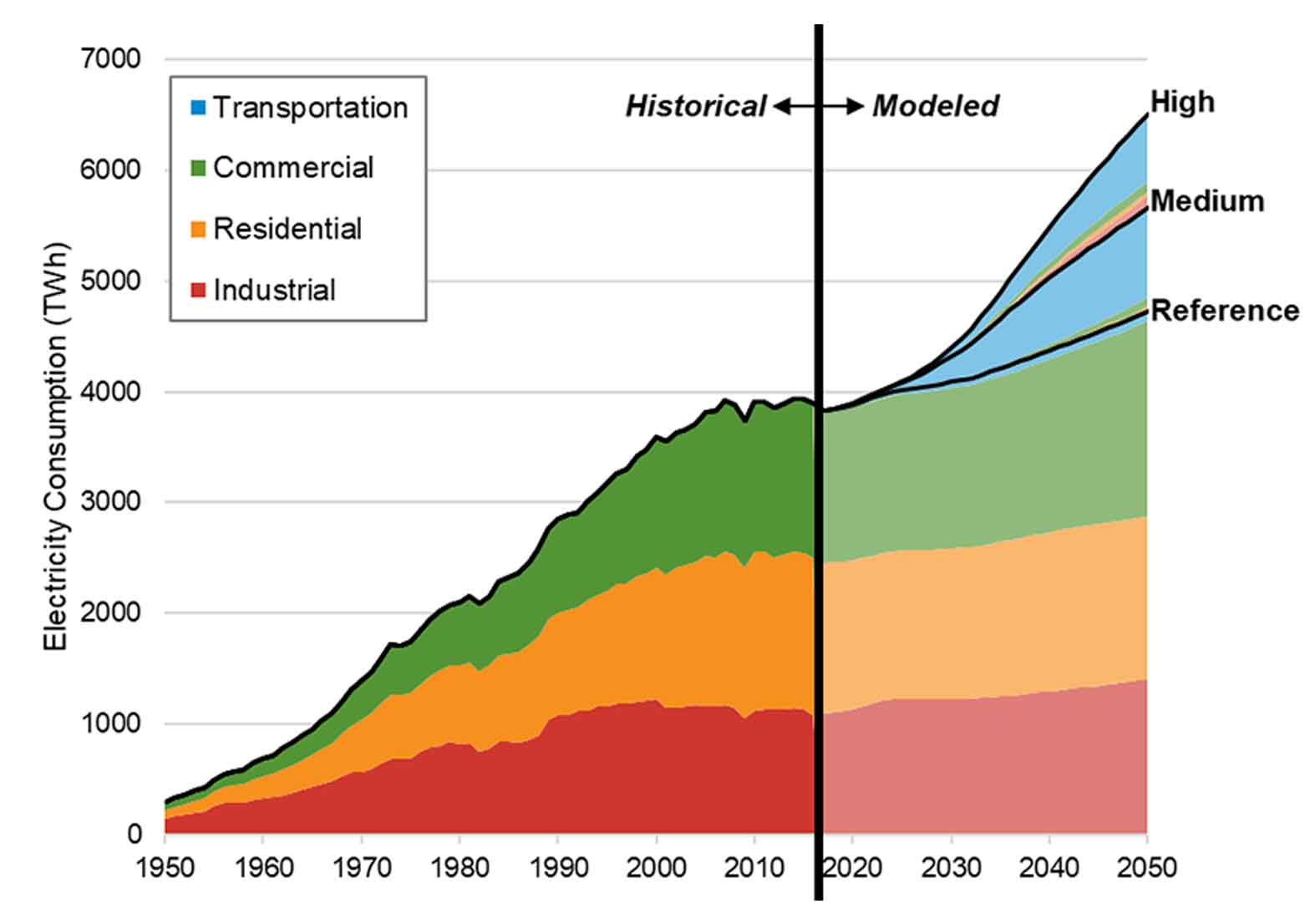
Analysis Explores Demand-Side Impacts of a Highly Electrified Future
A new NREL report aims to understand how widespread electrification might impact the demand side of the U.S. energy system in the transportation, commercial and residential buildings, and industrial sectors. The second report in NREL’s Electrification Futures Study characterizes futures with widespread electrification and quantifies the impacts on how much, when, and where electricity is used. The transportation sector experiences the greatest technology transition toward electrification, with electric vehicles accounting for up to 76% of vehicle miles traveled in 2050 in the high scenario.
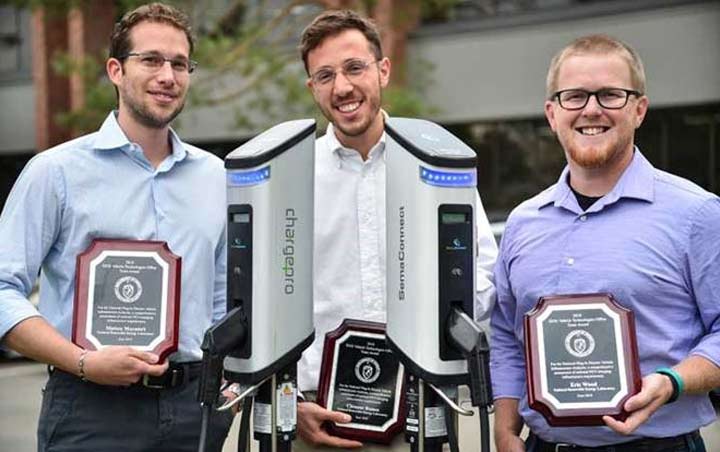
NREL Researchers Receive DOE Recognition for Outstanding Research Achievements
The U.S. Department of Energy (DOE) recently honored a number of NREL researchers at the Annual Merit Review and Peer Evaluation Meetings for the Hydrogen and Fuel Cells Program and Vehicle Technologies Office. NREL researchers were awarded for their work in a variety of areas, including plug-in electric vehicle charging infrastructure; world-class grid simulation and techno-economic analysis to define H2@Scale; thermal management innovations for vehicle electric drive power electronics and electric motors; and outstanding contributions to hydrogen safety, sensor technologies, and the global hydrogen refueling community.
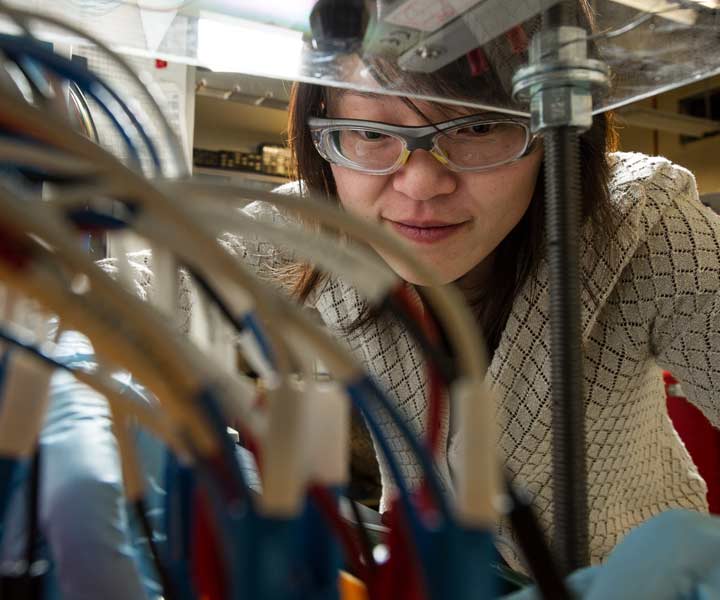
Improving Battery Chemistries for Electric Vehicles One Element at a Time
Even though lithium-ion batteries have experienced dramatic improvements in cost and performance during the past 10 years, new battery chemistries are still needed. NREL’s materials scientists are working to find new chemistry combinations to improve the performance of electric vehicles. Senior Scientist Chunmei Ban’s work focuses on lithium-ion, lithium-air, organic radical, and magnesium-ion batteries. Most recently, she and her team discovered a new approach for developing a rechargeable non-aqueous magnesium-metal battery that has potential advantages over lithium-ion batteries, including higher energy density and stability as well as lower cost.
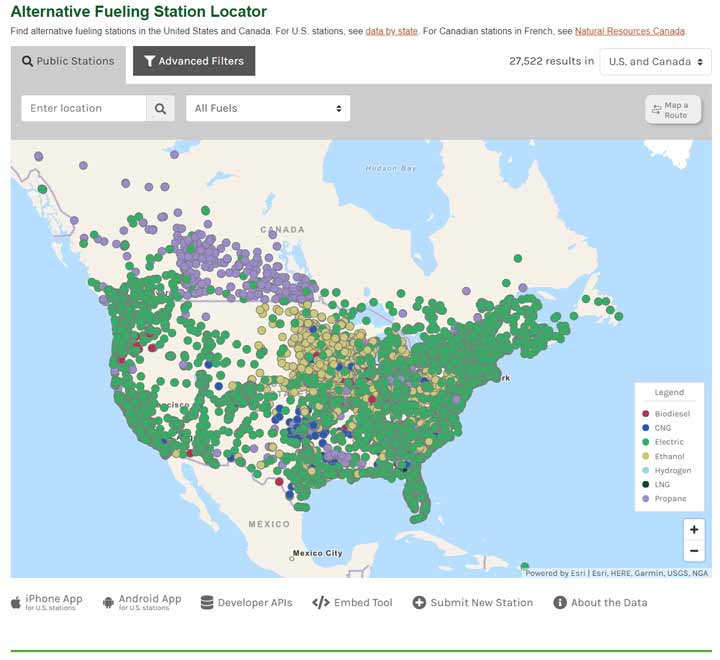
International Partnership Revolutionizes Cross-Continental Travel with Alternative Fuels
Travel between the United States and Canada just got easier for alternative fuel drivers with the Alternative Fueling Station Locator. NREL and Natural Resources Canada combined data to update this powerful tool, paving the way for drivers who use electricity, ethanol, biodiesel, natural gas, propane, and hydrogen to travel between countries confidently. This partnership highlights continuing upgrades to the station locator. Keep an eye out for Alternative Fuel Corridors, the next step in evolving this tool to keep pace with the rapidly progressing arena of transportation.
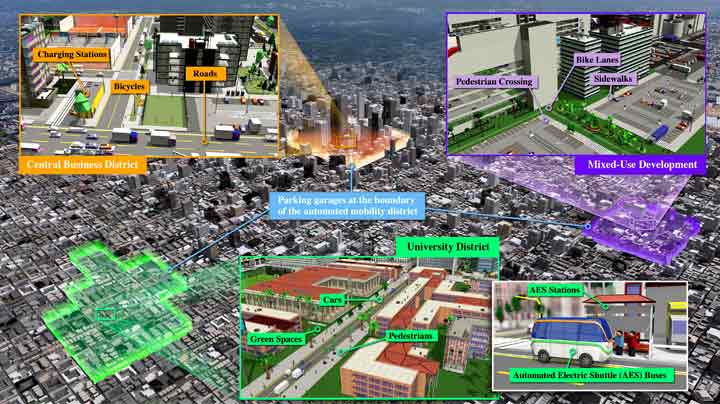
Quantifying Mobility and Energy Benefits of Automated Mobility Districts
As Silicon Valley and Detroit race to field fully automated vehicles, the “automated mobility district” (AMD) concept—and its potential to enhance personal mobility while reducing traffic congestion, energy use, and emissions—is gaining traction. In an AMD, automated vehicles displace personal vehicles for all day-to-day travel in a given campus-sized area rich with trip attractions such as jobs, housing, shopping, entertainment, and dining. Drawing on real-world data, NREL recently developed a modeling and simulation framework for assessing the potential mobility, energy, and environmental impacts of AMDs.
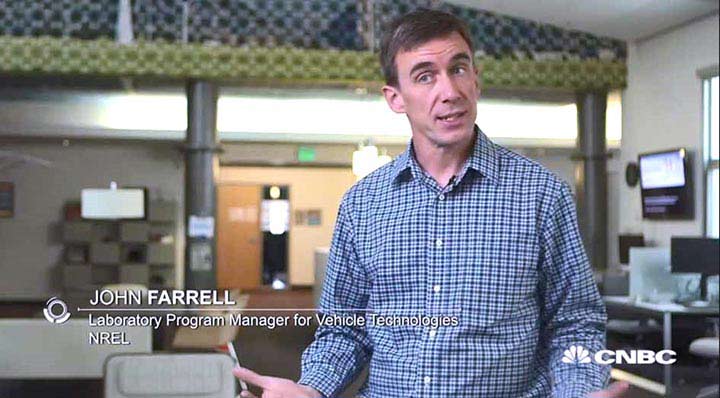
NREL Research Advances Biofuels Toward Ambitious European Union Goals
With the vast majority of today’s vehicles still relying on liquid fuels, the European Union set a goal for 10% of all European transportation fuels to come from renewable sources by 2020. Searching for the breakthroughs in scientific innovation that will make this possible, CNBC World visited NREL to explore how the lab’s advancements in fuels, engines, and the synchronization of the two can achieve improvements in fuel efficiency and cost savings. Key to this effort is the NREL-led Co-Optimization of Fuels & Engines Initiative.
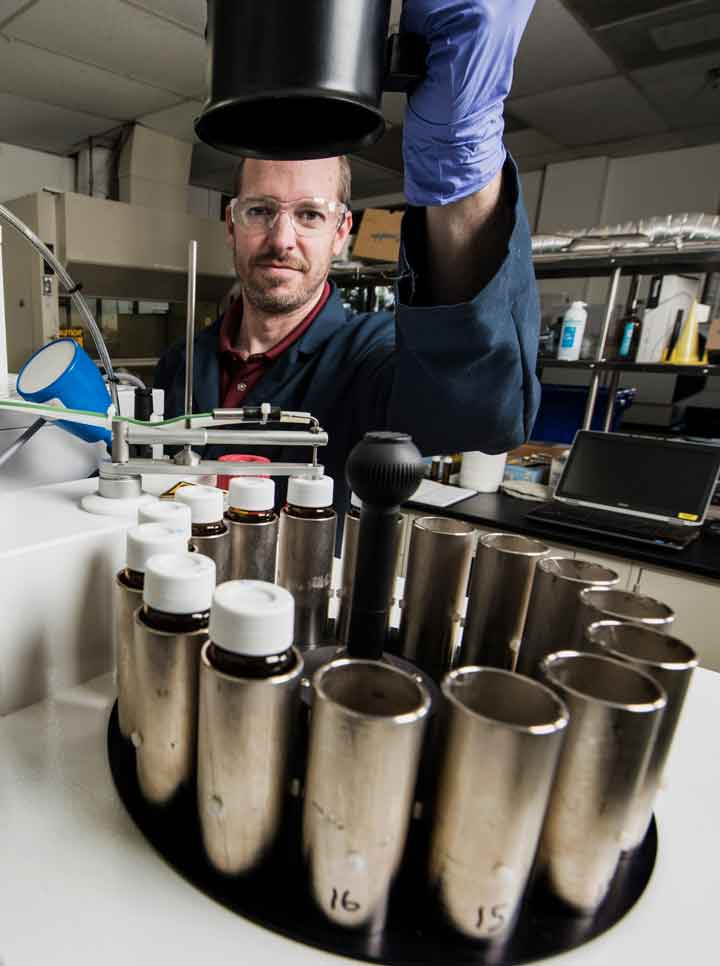
Collaboration Between National Labs Initiates Early-Stage Natural Gas Research
Striving to bring natural gas engine efficiency up to that of diesel engines, while maintaining markedly low NOx emissions, NREL is collaborating with three other national labs. This work was spurred by DOE’s interest in increasing national security and lowering the cost of transporting goods by supporting natural gas research. With this new area of research, NREL will conduct fundamental fuel ignition experiments that will shed light on approaches that can maximize natural gas engine efficiency.
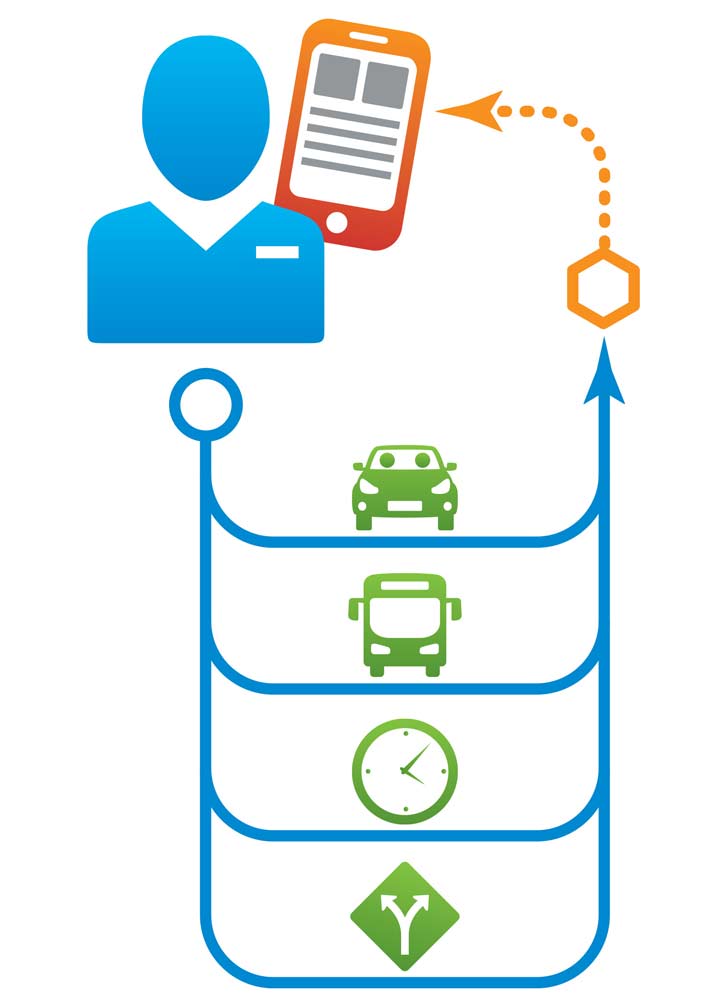
Merging Communications Technology with Behavior Science for Transportation Energy Benefits
The product of the recently completed Connected Traveler project—an innovative mobility app that uses behavioral levers such as incentives, convenience, and gamification to promote energy-efficient travel choices—is now in use in a few cities in Texas and Arizona, with plans for broader implementation soon. The research team, comprised of transportation modeling and behavior experts from universities, industry, and NREL, assessed the potential energy impacts of the app based on a range of market penetrations. Findings indicate substantial energy benefits as a result of changes in departure time, efficient routing, increased vehicle passenger load, and avoided trips.
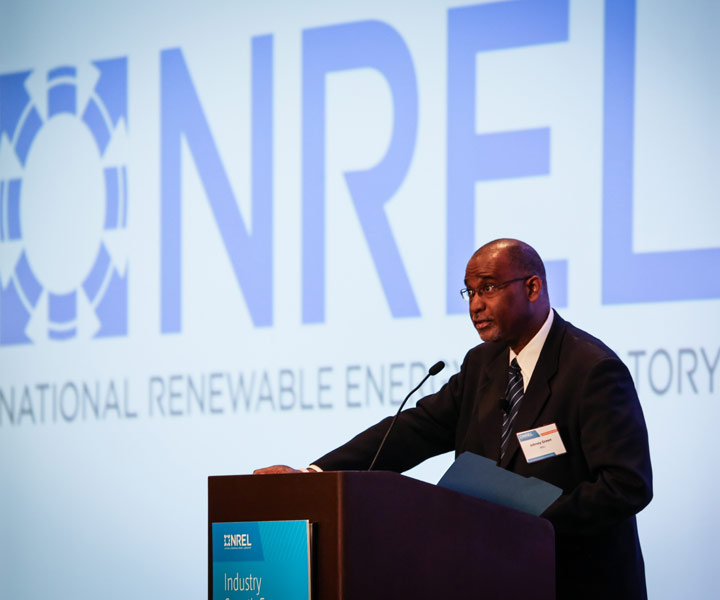
Faraday Institution Aims to Advance Electrochemical Energy Storage Technologies with Help from NREL
Electric vehicles are adding a new dimension to travel throughout the world. The Faraday Institution, an independent battery research organization based in England, is tapping into NREL’s Energy Storage expertise to light the path for electrification in the UK. NREL’s Mechanical and Thermal Engineering Sciences Associate Lab Director Johney Green sits on the Inaugural Board of Faraday’s Trustees to provide guidance and leadership on emerging electrochemical energy storage technologies as electrification takes off in the automotive industry and other sectors.
Learn more about NREL's Transportation and Mobility R&D, including Hydrogen and Fuel Cells, as well as partnership opportunities.
Share
Last Updated Feb. 27, 2025
